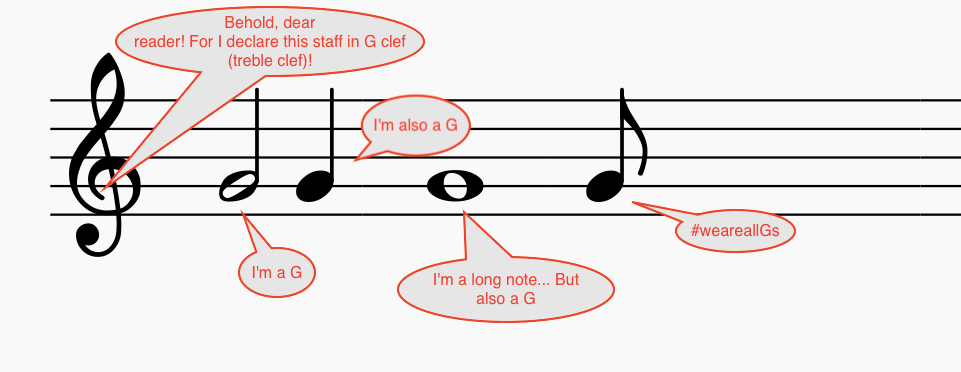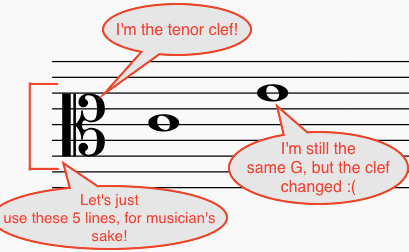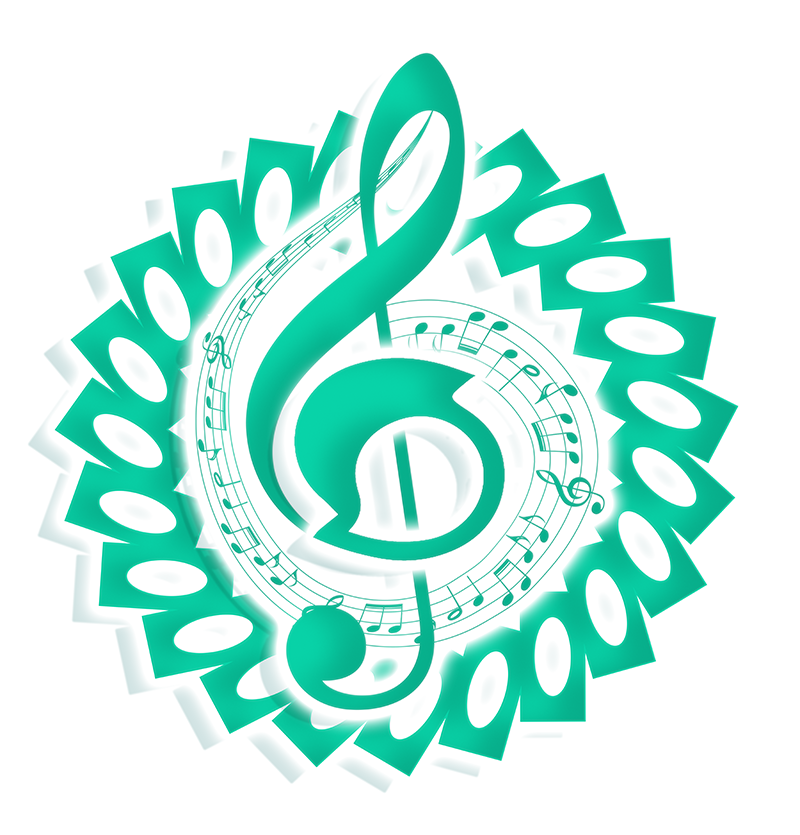Easy peasy lemon squeezy
Contrary to the popular belief, those dots and lines in sheet music are very easy to understand, and have an intuitive basis once you get some easy concepts. In this post I'll drive you into those concepts starting with an historical interpretation of my own. And believe me, it's so easy that even you great-grand-mother would understand.
.jpg)
An Historical Context
In medieval ages, the average choir-boy would have to know something like 200 gregorian chants by memory (!!!), before they could even start singing in church events. If you ever heard gregorian chants you can imagine how big of an effort that was, since they're very very very similar: their musical value was as big as the elevation they would bring to the liturgy.
By writing the text and noting the variations in the melody just above it, they could help singers remember where the music was going, "Up" or "down" in pitch, just like you do in your voice when you sing. You're actually changing the frequency your vocal strings vibrate, passing that frequency to the air around.
During puberty, most men's voice starts changing and gets lower than most women's. That could be a reason for drawing a red line indicating where a specific pitch was. This was helpful so people could know how far from the "main" pitch they were and they wouldn't get lost so easily. An example:

Source
Now you know where I'm heading: this already seems like today's sheet music. If you can add one line to each pitch and starting notating duration, you could send the music over to anybody that could read it without even knowing it previously! There are examples of music notated in 4, 5, 6, 8 or 16 lines... Pretty confusing since you'd lose reference again. So people sticked with 4 or 5 lines as we use today.
.jpg)
Fast-forward to modern notation, the principle remains the same: "up" in the staff means "up" in your voice's pitch. Duration of the notes is based on length in the paper, "how much empty space you leave between notes", but for clearness we make notes white or black, with stems or without stems, depending on how much they should last. I'll go a bit further on rhythm and duration in another post.
Any staff starts with a clef. Clef comes from the latin clavis which means "key". It is pretty much a key: just like they used a red line to indicate a specific pitch, that's exactly what the clef makes. The treble clef indicates where the G (sol, in latin) is, meaning every thing that goes on that line is a G:

If that indicated G is a very high note (for example for some male voices) you'll end up using only the bottom lines, and constantly adding suplementary lines. And for the same reason, you'll likely not be using all those lines above G, right? So that's ok, you just add some lines to the bottom and eliminate some at the top. That way you keep using only 5 lines and it is still nice and tidy to read. Since the clef becomes a bit high on the paper, we change for another clef so the "reference" is still near the middle of the staff. For example, the tenor clef indicates where the C (do or ut) - 5 notes lower than the G - is:


So if ever you hear a musician complain about the clef changes, you can yell "HA-HA, the clef didn't change, you just started reading different lines!". But please don't do it, because things complicate A LOT along the way once you start octavating clefs and using transpositions... And you'll not want to hear a musician talk about it for hours.
That's pretty much all you need to know regarding note reading, assuming you already know the note's sequence (C-D-E-F-G-A-B-C-D-E... etc) and know that alternate between lines and spaces. Next "lesson" I'll talk about durations, rhythms, and hierarchy!
Pretty intuitive, right?
Did you know note reading was this easy?
Do you have any doubts? Just comment!

This is a double-entry for #educatorshowdown by @novili and Information Finding Championship. Go and upvote novili/follow him! and apolymask's post/blog!
If you enjoyed this post please consider:

Source: @runicar



